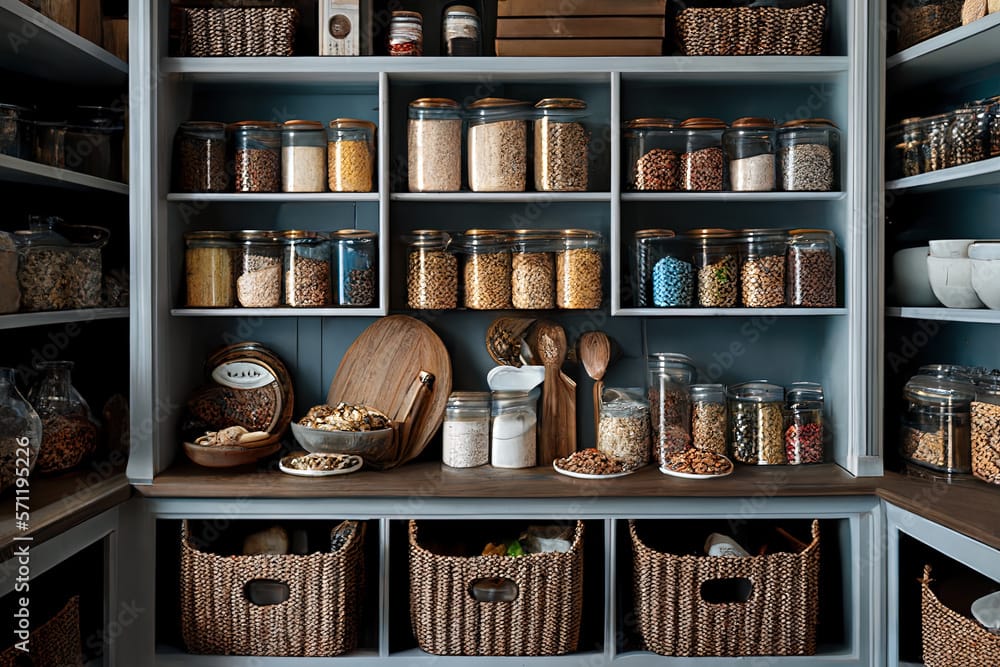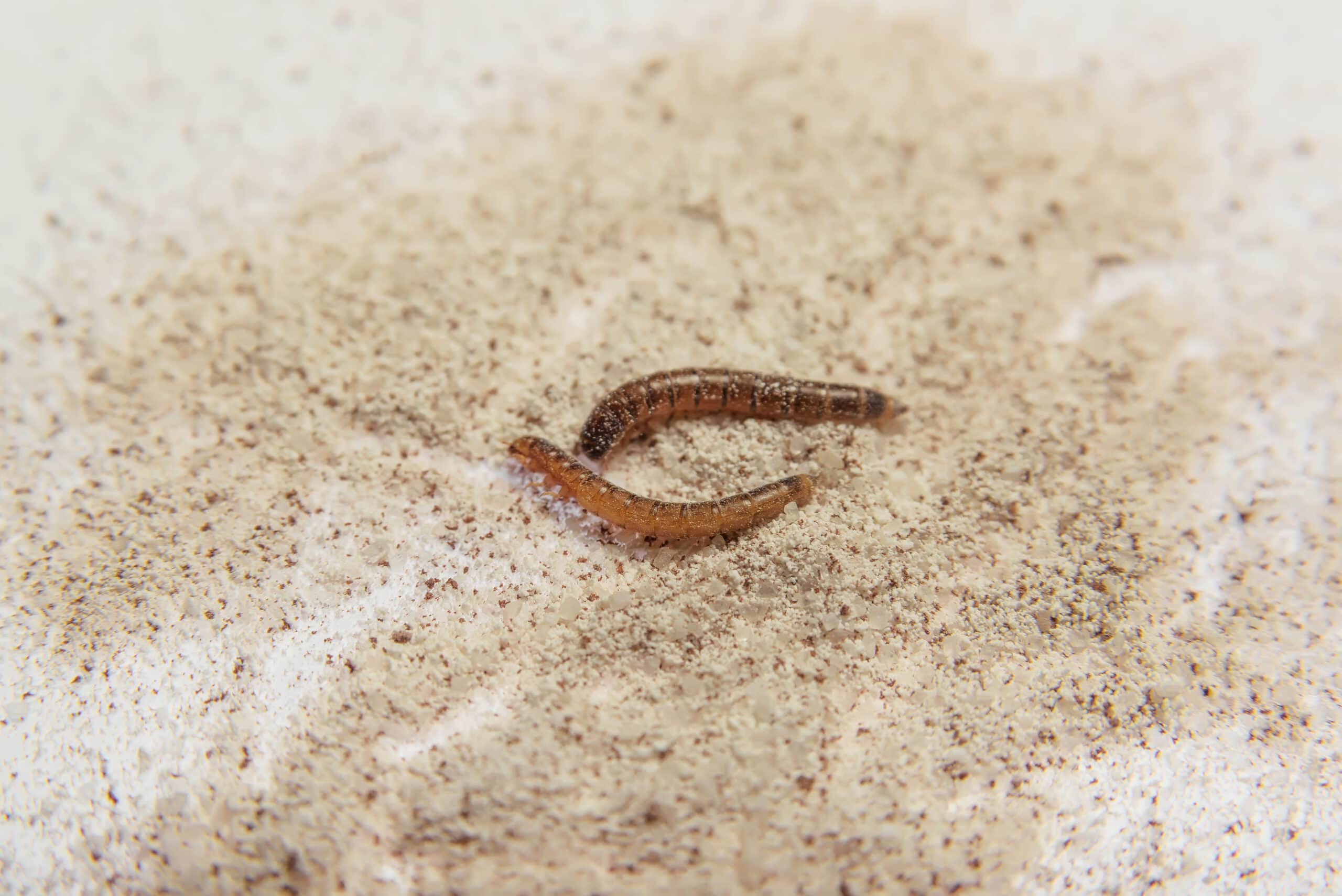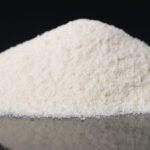Greetings, savvy survivalists! Welcome back to TheSavvySurvive.com, your trusted hub for all things’ survival.
We’re all about equipping you with the knowledge and skills to thrive in any situation, and today, we’re focusing on a survival food staple – flour. Yes, that humble bag of flour sitting in your pantry is more than just a baking ingredient; it’s a survival food powerhouse. But, like any powerhouse, it needs proper care and maintenance. That’s where we come in.
In this comprehensive guide, we’re going to teach you everything you need to know about storing flour for the long term. So, whether you’re preparing for a potential emergency or just want to make your pantry more efficient, this guide is for you. Let’s get started!

4 Steps to Determine if Your Flour Has Gone Bad
At The Savvy Survive, we understand that flour is a staple in many kitchens, and knowing when it’s no longer good to use is crucial. Flour, like any other food product, can go bad over time, especially when not stored correctly. There are a few telltale signs that your flour has gone bad.
-
Check the Appearance: Inspect your flour for any signs of discoloration or mold. If you notice any, it’s time to discard the flour.
- Smell the Flour: Fresh flour typically has a mild, earthy aroma. If your flour smells sour or musty, it’s likely spoiled.
- Feel the Flour: Touch the flour to check its texture. If it’s unusually hard or clumpy, it might be due to moisture exposure, which could lead to spoilage.
- Look for Bugs or Larvae: If you see any bugs or larvae in the flour, it’s definitely time to throw it out.

Remember, when in doubt, it’s safer to discard questionable flour and replace it with a fresh batch. Proper storage is key to maintaining the longevity and quality of your flour. Stay tuned to The Savvy Survive for more practical tips and guides on food storage and survival skills.
Why Is Proper Flour Storage Important?
How Does Flour Go Bad?
Flour is made from ground grains, and it can go bad if it’s not stored properly. The biggest threat to flour is humidity, which can cause it to clump and go stale. Humidity also encourages the growth of mold and bacteria, which can cause the flour to spoil.
What Happens if You Use Bad Flour?
If you use bad flour, your baked goods won’t turn out as expected. They may be dry, crumbly, or have an off taste. Worse yet, if there are insects or mold present in the flour, it can make you sick.
What are the Benefits of Proper Flour Storage?
Proper flour storage has several benefits, including:
- Keeping your flour fresh for longer
- Preventing bugs and pests from infesting your pantry
- Helping you save money by reducing waste
What Types of Flour Should You Store?
There are several types of flour, and each has its own unique storage requirements. Here’s a quick breakdown of the most common types of flour and how to store them:
How to Store White Flour?
White flour is the most common type of flour and is made from wheat. To store white flour, keep it in an airtight container in a dark and dry place, like a pantry. You can also store it in the refrigerator, but this is not necessary.
How to Store Whole Wheat Flour?
Whole wheat flour is made from the entire wheat grain, including the bran and germ. It has a shorter shelf life than white flour and can go rancid quickly. To store whole wheat flour, keep it in an airtight container in the freezer or refrigerator.
How to Store Bread Flour?
Bread flour is a high-protein flour specifically designed for making bread. To store bread flour, keep it in an airtight container in a cool, dry place, like a pantry. You can also store it in the refrigerator or freezer, but this is not necessary.
How to Store Flour Long-Term?
What Are the Best Ways to Store Flour Long-Term?
If you want to store your flour for the long term, you’ll need to take some extra steps to ensure it stays fresh. The best ways to store flour long-term are:
- Store it in an airtight container
- Keep it in a cool, dry place
- Avoid exposure to light
- Consider using oxygen absorbers or mylar bags
How to Store Flour in Bulk?
If you buy flour in bulk, you’ll need to store it properly to keep it fresh. The best way to store flour in bulk is to divide it into smaller portions and store them in airtight containers, like glass jars or plastic containers. You can also use mylar bags and oxygen absorbers to keep it fresh for longer.
What are Mylar Bags, and Should I Use Them to Store Flour?
Mylar bags are a type of plastic bag that is made from a metalized polyester film. They are often used for long-term storage of food items, like flour, rice, and beans. Mylar bags are a great way to store flour and keep it fresh for longer. You can use them along with oxygen absorbers to prevent the growth of mold and bacteria.
Which Containers are Best for Storing Flour?
What is an Airtight Container?
An airtight container is a container that creates a seal that is impervious to air, water, or other gases. This type of container is ideal for storing food items like flour, as it helps to prevent the growth of mold and bacteria.
Can You Store Flour in an Airtight Container?
Yes, an airtight container is the best type of container to store flour in. It helps to keep the flour fresh for longer and prevents bugs and moisture from getting in.
What are Other Effective Flour Storage Containers?
In addition to airtight containers, other effective flour storage containers include:
- Glass jars
- Plastic containers with tight-fitting lids
- Heavy-duty resealable plastic bags
In the quest for the best containers for storing flour, the 16-cup Rubbermaid Brilliance Airtight Food Storage Container stands out. This container, designed specifically for pantry storage, is a fantastic choice for keeping your flour fresh and ready for use.
The Rubbermaid Brilliance container is airtight, which is crucial for preventing the growth of mold and bacteria in your flour. It features a secure lid that locks in freshness and keeps out unwanted pests. With a generous 16-cup capacity, it’s perfect for storing a standard bag of flour.
In addition to its practical features, this container also boasts a sleek, transparent design that allows you to easily see the contents and quantity left. It’s also stackable, making it a space-efficient solution for your pantry.
Remember, the right storage container can make a significant difference in the longevity and quality of your flour. With the Rubbermaid Brilliance Airtight Food Storage Container, you can be confident that your flour is stored in the best possible conditions.
How to Freeze Flour for Long-Term Storage?
How to Prepare Flour for Freezing?
To prepare flour for freezing, transfer it to an airtight container or heavy-duty freezer bag and label it with the date. If you’re in a pinch, a paper bag can also be used, but it’s not as effective as the other options. You can also use mylar bags and oxygen absorbers to keep it fresh for longer.
How Long Does Flour Last in the Freezer?
When stored properly, flour can last for up to two years in the freezer. This method of storing flour in the freezer can significantly extend the life of your flour.
How to Defrost and Use Frozen Flour?
To defrost frozen flour, take it out of the freezer and let it come to room temperature. You can then use it in your favorite recipes just like you would with fresh flour.
By following these simple tips and tricks, you can keep your flour fresh for longer and prevent bugs and pests from infesting your pantry. Whether you’re an occasional baker or a seasoned pro, knowing how to store flour properly is essential for getting the most out of this versatile ingredient.
Comparing Flour Storage Methods and Their Shelf Lives
Now that we’ve covered the various methods of storing flour, it’s important to understand how long flour can last under each of these storage conditions.
The shelf life of flour can vary significantly depending on the storage method used. To help you make the best choice for your needs, we’ve compiled a table summarizing the shelf lives associated with different flour storage methods. Let’s take a look:
| Storage Method | Shelf Life |
|---|---|
| Pantry (Airtight Container) | Up to 1 year |
| Refrigerator (Airtight Container) | Up to 6 months |
| Freezer (Airtight Container or Freezer-Safe Bag) | Up to 2 years |
| Mylar Bags (With Oxygen Absorbers) | Up to 10 years |
| Bulk Storage (Airtight Containers) | Up to 1 year |
| Rubbermaid Brilliance Airtight Food Storage Container | Up to 1 year |
Frequently Asked Questions (FAQs)
Q: Does flour go bad?
A: Yes, flour can go bad. When flour is exposed to oxygen, moisture, or heat, it becomes rancid. This affects the quality and taste of flour, making it unsuitable for use.
Q: What is the best way to store flour?
A: The best way to store flour is in an airtight container in a cool, dry place. This helps to prevent moisture and air from entering the container and causing the flour to spoil.
Q: How long can you store flour?
A: The shelf life of flour varies depending on the type of flour and how it is stored. All-purpose flour can be stored for up to a year when stored properly in an airtight container in a cool, dry place.
Q: Can you freeze flour?
A: Yes, you can freeze flour to extend its shelf life. Make sure to store the flour in an airtight container or a freezer-safe bag to prevent moisture from entering.
Q: What is the long-term flour storage like?
A: Long-term flour storage involves using methods such as storing in airtight containers, using mylar bags, and freezing the flour to extend its shelf life. These methods can help preserve the quality and freshness of the flour for months and even years.
Q: Can I store flour in the original bag?
A: It is not recommended to store flour in its original bag as it may not be airtight and can allow moisture or air to enter, causing spoilage. It’s best to transfer the flour to an airtight container for storage.
Q: What is the difference between whole-grain flour and nut flour?
A: Whole-grain flour is made from the entire grain, including the bran, germ, and endosperm. Nut flour, on the other hand, is made from ground nuts. These two flours have different nutritional values and baking properties, so it’s important to use the appropriate flour for the recipe.
Q: How to keep flour fresh?
A: To keep flour fresh, store it in an airtight container in a cool, dry place or in the freezer. Avoid storing flour in areas that are humid or exposed to heat.
Q: How much flour can I store long-term?
A: You can store as much flour as you want long-term, as long as you have a proper storage system and space to store it. Keep in mind that flour can be heavy, so it’s important to store it in a safe and accessible place.
Q: Is it safe to store flour in the fridge or freezer?
A: Yes, it is safe to store flour in the fridge or freezer as long as it is stored in an airtight container or freezer-safe bag. This can help to extend the shelf life of the flour and prevent it from going bad.
Conclusion
And there you have it, survivalists – your ultimate guide to long-term flour storage. By following these tips and tricks, you’re not just extending the life of your flour; you’re also ensuring that you have a reliable food source ready for any situation.
But remember, survival isn’t just about having the right resources; it’s about knowing how to use them effectively. And that’s what being a savvy survivalist is all about.
So, keep exploring, keep learning, and keep preparing. With TheSavvySurvive.com by your side, you’re not just surviving – you’re thriving. Until next time, stay savvy, survivalists!




